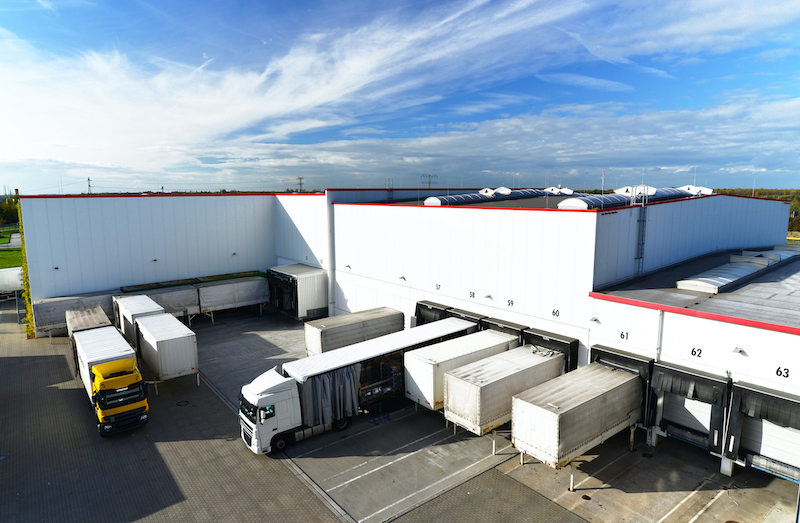The Surge of Last-Mile Deliveries

Without question, COVID-19 has dramatically changed the way we live, work, and shop. While the long-term impact of these changes has yet to be seen, one effect has been hugely positive. With people following social distancing guidelines and increasingly shopping online, last-mile deliveries are surging.
Last-mile delivery fleets were the fastest-growing fleet segment before the COVID-19 outbreak. Since the outbreak, eCommerce sales and last-mile deliveries have rapidly accelerated. Just a year ago, consumers purchased only 10.7% of all goods in the U.S. online. Today, eCommerce sales in the U.S. have grown by over 30%.
So what exactly is last-mile delivery, and what does it mean for fleet operations as we move forward into the future? Let’s take a closer look.
Turning Last-Mile into Green Miles
Last-mile, which is sometimes called final-mile, is where an item is sent out from a local warehouse or fulfillment center for its final delivery to the customer. Although “mile” is used in the term, the delivery range can be anywhere from a few blocks to nearly 100 miles.
Every step of the retail supply chain process — first-mile, middle-mile, and last-mile — is crucial, but it’s last-mile where the most significant impact on customer experience is made. If a delivery isn’t seamless — late, never delivered, or the product is damaged — the customer is understandably unhappy and may choose to shop with a competitor the next time. That said, last-mile is key to customer satisfaction.
By 2023 global eCommerce sales are expected to surpass $6.5 billion, which means significant growth opportunity for fleets that provide customers a seamless delivery experience. Focusing priorities on the following areas can help fleets achieve their delivery goals and turn last-mile to green.
Attracting and Retaining Drivers
Driver shortage was the top industry issue for the fourth consecutive year in 2020, according to the American Transportation Research Institute (ATRI). Over the next decade, the need for drivers is expected to grow to 1.1 million. With eCommerce and last-mile deliveries ever-increasing, the time is now to refocus on attracting and retaining the best drivers.
Finding qualified drivers is difficult, but keeping the ones you have can prove even more difficult. Here’s some help:
First, review the retention and programs/policies you have in place, such as:
- Safety
- Incentives
- Bonuses
- Raising wages
- Optimized routes for more at home time
- Regular check-in calls
- Embracing technology
Next, assess what is working and what needs to be tweaked. Make promoting driver engagement a priority. Engaged drivers are better employees; they are safer and more likely to stay on board. Regularly ask your drivers for feedback and don’t just listen to what they have to say — act on it.
Optimizing Operating Expenses
Last-mile delivery is the most expensive part of the fulfillment chain, and the demand for quick, seamless deliveries is only going to increase. A research study by Capgemini found that last-mile deliveries cost businesses an average of $10.10 per package delivered, but customers pay an average of only $8.08.
Using fleet data to identify opportunities, reduce downtime, and keep maintenance on a schedule will help minimize operating costs while ensuring your drivers average multiple deliveries per hour to keep your business viable and profitable.
Conduct an Assessment of Your Fleet
With the surge in eCommerce spending and last-mile deliveries, it’s essential to take time to conduct an assessment of your vehicles. This process can help determine the number and type of assets needed to efficiently and cost-effectively meet delivery time windows and expectations while minimizing costs.
Your assessment may find that you don’t need as many large box trucks as you currently have when vans, SUVs, or sedans are better suited to get the job done. Smaller, nimbler, and more fuel-efficient vehicles not only offer greater fuel economy but they also provide greater driver comfort, a tighter turning radius, and a range of upfitting options to meet specific fleet applications. Renting vehicles is also a consideration. With rentals, you can quickly and cost-effectively scale to meet a surge in delivery demand.
Electric vehicles (EVs) are also worth exploring for your fleet. EVs have come down in price, and that trend is expected to continue. Carnegie Mellon University forecasts that some EVs will have the same sticker price as their internal combustion equivalents by 2025. This is great news for fleets since EVs have significantly lower maintenance costs, lower emissions, and cheaper running costs. More good news on the EV front is as impressive as EV technology is today: expect significant advancements in range and efficiency in the near future.